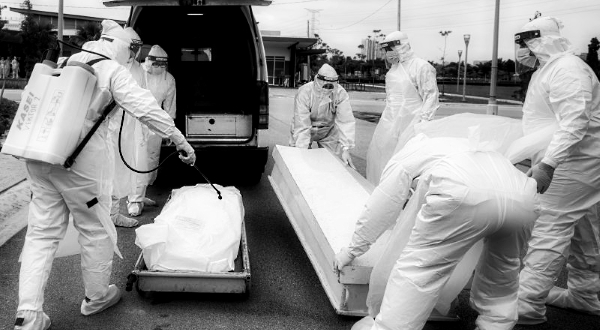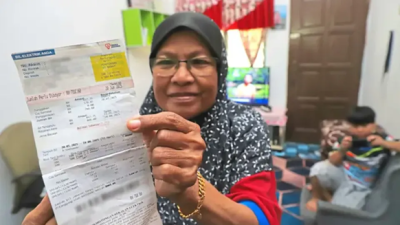By Lim Sue Goan, Sin Chew Daily
As the three indicators announced earlier have not been met, prime minister Tan Sri Muhyiddin Yassin has announced that the first phase of national recovery plan will continue to be in force.
Even though senior defense minister Ismail Sabri has also announced economic sectors that will be allowed to operate during the second and third phases, many Malaysians remain doubtful for how long we will remain in phase one.
Manufacturing sector, electrical shops and hair salons will be able to operate during the second and third phases, but this is of little help at all. When many people are struggling to feed themselves and their families, it will be pointless to tell them it's going to be a big feast awaiting them one month down the road.
Many have said earlier on that while the government has unveiled the indicators for the national recovery plan, it fails to lay out the strategies to achieve the goals. For example, to move on to phase two from the current phase one, we will need to have 7-day average of daily new infection number below 4,000, moderate ICU utilization rate and 10% of population receiving two vaccine jabs. To bring daily infection numbers to below 4,000 is a tall order given the emergence of the Delta variant and the loopholes in our anti-virus measures.
If we don't review and modify the national recovery plan, it will end up a failure just like MCO 2.0 and 3.0.
The nationwide lockdown has been in force for almost a month now, and since the people are not allowed to assemble, we can no longer put the blame squarely on people's non-compliance. The biggest problem lies with the fact that the government has not implemented the anti-virus measures adequately.

Already some local experts have voiced their concerns. For instance, senior consultant pediatrician Dato' Dr Amar-Singh HSS has cautioned that the current high baseline community infections, low vaccination rate and the emergence of Delta variant make the fifth wave of COVID-19 infections very likely.
Meanwhile, former health director-general Lokman Hakim has also pointed out that the situation has not improved at all more than a month after MCO 3.0 has been enforced. Instead it has become worse, showing that we fail once again.
There are a few things we need to do to prevent the pandemic from going out of hand.
First and foremost, we have conducted fewer and fewer screening tests after the national recovery plan was announced. For example, we reported 5,586 new cases on June 27 with 66,969 tests, almost 9,000 fewer than the 75,753 tests conducted a day earlier, but the positivity rate soared to 8.34%.
As we are conducting fewer and fewer tests, I think the authorities are no longer serious now about tracking close contacts and enforcing strict quarantine measures. Without breaking the infection chain, we are allowing the virus to continue to spread rapidly at workplaces and factories which are still operating at this moment.
Secondly, the new variants may incapacitate our herd immunity program. Health DG Dr Noor Hisham has said we reported five Beta and one Delta cases between June 20 and 22, sending the total number of cases involving new virus variants to 189. It is believed that the actual number could be higher than this, given the inadequacy in our COVID-19 genome sequencing monitoring capabilities. The recent spike in BID (brought in dead) cases proves that the virus has now become powerfully fatal.
Latest statistics issued by Public Health England show that among the people killed by the Delta variant, 43% had received both doses of the vaccine.
Thirdly, vaccine supply trails behind the vaccination rate. Science, technology and innovation minister Khairy Jamaluddin explains that more than seven million out of the eight million doses of vaccine we have at hand have already been administered. However, he says the vaccine shortage problem will not happen again when more vaccine supply comes on stream in July.
Due to short supply of vaccines, the vaccination rate has begun to fall after registering a peak single-day administration of 268,604 doses on June 24: with 215,968 doses administered on June 25; 187,877 doses on June 26 and 168,956 doses on June 27. At the same time, vaccination program for shopping malls and the retail sector originally scheduled to start in July is now deferred to August.
If the vaccination rate slows down, we won't be able to achieve the 10% vaccination rate by mid-July, meaning phase two is still some time away.
The government must also take care of the psychological aspect of the people. As of June 18, some 122,328 SOS calls have been made to the health ministry's help hotline. 109,806 or 89.4% of the calls have been requests for emotional and psychological support. This shows that many people are actually living in misery.
The PM unveiled the RM150 billion PEMULIH package on Monday that includes automatic loan moratorium, financial assistance, salary subsidy program, electricity bill rebate and unemployment aid. While this may help somewhat relieve the plight of the people, it may not last them too long. Moreover, unchecked government handouts will invariably send the public debts through the roof.
The only solution to save the livelihoods of Malaysians is to effectively contain the spread of the virus so that we can open our economy once again.
ADVERTISEMENT
ADVERTISEMENT


































